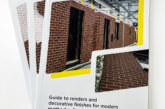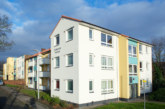 David Hartley, Managing Director of MTX Contracts, discusses the recent updates and priorities aligned to offsite construction in the healthcare sector.
David Hartley, Managing Director of MTX Contracts, discusses the recent updates and priorities aligned to offsite construction in the healthcare sector.
The COVID-19 pandemic has shone a particular light on ventilation in the healthcare sector when it comes to modular and offsite construction. However, there is a concern that the drive to get the best value can result in a lack of consideration for patient care, in particular infection control and patient comfort.
Many buildings are supplied with no mechanical ventilation or air-handling system, and whilst that may be considered adequate in meeting minimum standards, the world has changed following the pandemic. It is expected that later this year there will be an update to the HTM 03-01 standards, which will reflect the need for improvements in this area, and at MTX, all modular buildings go above and beyond the minimal requirements where standards of ventilation are concerned.
Technology and the consideration around the emergence of ‘smart’ hospitals is also a hot topic, not just for modular construction, but industry wide. The trade must become much more agile and savvy where this is concerned, reflecting it at every stage of the design and construction process to ensure client needs and demands are met. Patients and user needs remain at the forefront, however the building must support the technological advances and ensure that this successfully adds benefit to the end user as opposed to just being a box ticking exercise.
Benefits of modular for healthcare
The availability of high-quality modular buildings has been a huge advantage for hospitals and health trusts that have been faced with urgent needs for additional facilities, especially given the increased pressure on funding. Modern Methods of Construction (MMC) offers a number of benefits to both the public and private healthcare sector, and these typically fall into three main categories — speed, cost and efficiency.
The speed of delivery when using MMC is far quicker when compared to the traditional construction methods, it can cut build times by as much as 50%, dependent on the various factors at play. A recent project completed by MTX at Norfolk and Norwich University Hospital cut what would have typically been a three-year project into just one, even in the midst of a global pandemic when demands, difficulties and disruptions were at an all-time high.

This reduction in time also benefits from a cost perspective. Although overall construction costs are similar to that of traditional approach, the reduction in build time and the subsequent financial savings associated to that are substantial, making it a far more economical option.
The build accuracy and the ability to control more factors with pre-manufactured solutions mean that there is an increased level of cost-predictability with MMC, which particularly in the public sector means projects can delivered on budget and in line with funding demands.
Additional benefits
The nature of volumetric modular construction greatly improves the cost certainty as the superstructure is built up from repeatable steel frames. This type of construction is also inherently lower in carbon, and the efficiency of offsite construction reduces travel requirements to and from site.
With majority of the works able to take place offsite, the pre-manufactured value of the project means that there is much less disruption to the healthcare provider. Given the recent increase in demands on the NHS, this is particularly important as it means they can continue to serve their patients and provide them with the care that they need.
The ability to have a smaller site means that the construction process can typically be managed to limit issues with accessibility to other departments. Although with some healthcare projects MTX work on standalone builds on the healthcare site, other times, the new constructions will be joined to existing buildings, meaning that departments must be quickly and efficiently connected.
Modular construction in practice — Glenfield Hospital innovative rooftop ward extension
University Hospitals of Leicester NHS Trust had a requirement to develop their existing site to create a new 12-bed renal ward department, plus an extra 52 acute beds at Glenfield Hospital.
MTX and modular construction provided Glenfield Hospital with an innovative solution — something that was impossible via traditional methods. With available ground space limited on the busy site, options for constructing new wards were restricted, so the Pre-Construction Team at MTX proposed a rooftop solution.
A bespoke, offsite solution situated on top of the current hospital and sandwiched between the university building, pathology department, mortuary and live wards underneath, ensured the hospital was able to deliver the new wards they needed, without taking up any further ground space.
Built on a roof directly above live wards and within a concealed courtyard, inaccessible through the hospital, an engineering excellence choice via onsite volumetric construction was the only feasible method. As all-encompassing facilities remained operational throughout the whole construction period, MTX had to ensure minimal disruption to the existing estate infrastructure. To facilitate this, a pre-cast lift shaft solution was built onsite and craned into place to reduce time and workforce on site and deliveries were restricted around peak traffic flow times.
Header image is University Hospitals of Leicester NHS Trust’s Glenfield Hospital.









